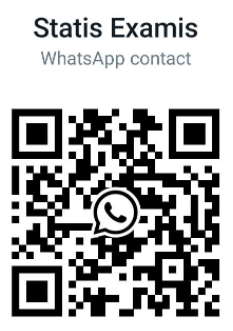Navigation » List of Schools » California State University, Northridge » Music » Music 306 – Introduction to Jazz » Spring 2022 » CH 07-11 Review Quiz
Question #1
A stride piano technique
B one-handed playing
C chordal comping in the left hand, fast melodies in the right hand
D two-handed chords played in a steady four-beat pattern
Question #2
A Count Basie’s
B Cab Calloway’s
C Duke Ellington’s
D Chick Webb’s
Question #3
A publicly embarrassed by Jo Jones when he didn’t play well
B avoided alcohol and drugs
C developed the ability to play incredibly fast
D dedicated himself to practicing and improved quickly
Question #4
A They produced and distributed their own recordings.
B They took other jobs in service industries.
C They toured constantly.
D They played on network radio shows.
Question #5
A gatling guns
B blitzkriegs
C torpedoes
D bombs
Question #6
A shifting the pulse to the hi-hat cymbal and using the toms for accents
B shifting the pulse to the ride cymbal and using the bass drum for accents
C shifting the pulse to the bass drum and using the ride cymbal for accents
D shifting the pulse to the hi-hat cymbal and using the ride cymbal for accents
Question #7
A Savoy Ballroom
B Birdland
C Minton’s Playhouse
D Onyx Club
Question #8
A performing at incredibly fast tempos
B playing tunes in unfamiliar keys
C modulating between different keys
D performing obscure, unpublished compositions
Question #9
A Bebop was more difficult for audiences to understand.
B Bebop demonstrated the virtues of harmonic simplicity.
C Bebop moved from the mainstream to become a music of outsiders.
D Bebop was performed in smaller spaces.
Question #10
A rich repertoire of harmonic substitutions
B master of stride technique
C primarily an ensemble pianist
D fast right-hand runs
Question #11
A fully blind
B deaf in one ear, very little in the other
C blind in one eye, very little in the other
D fully deaf
Question #12
A sparse accompaniment for horn soloists
B brief solos accompanied by the rest of the rhythm section
C long unaccompanied solos
D solo introductions
Question #13
A banjo
B guitar
C piano
D drums
Question #14
A southern jive
B country gallup
C rockabilly
D western swing
Question #15
A Sid Catlett
B Gene Krupa
C Chick Webb
D Jo Jones
Question #16
A Milt Hinton
B Wellman Braud
C Walter Page
D Jimmy Blanton
Question #17
A Fats Waller
B Mary Lou Williams
C Benny Goodman
D John Hammond
Question #18
A He showed that the electric guitar could be played in exactly the same style as acoustic jazz guitar.
B He worked primarily as a soloist, rather than as an accompanist.
C He revealed the broad expressive range and lyricism that the electric guitar could produce.
D He was the very first musician to perform on electric guitar.
Question #19
A deft scat singing
B deep connection to the blues
C four-octave range
D timbral punctuations including squeals and growls
Question #20
A “Strange Fruit”
B “Reckless Blues”
C “One Hour”
D “Oh! Lady Be Good”
Question #21
A conducting
B all of these
C trumpet
D voice
Question #22
A held his saxophone at an extreme horizontal angle
B spoke in a creative, personal slang
C wore a porkpie hat
D outgoing and brash in conversation
Question #23
A performed throughout the Midwest with King Oliver and other leaders
B spent a long and successful time in the Fletcher Henderson band
C took part in Kansas City jam sessions
D played several instruments in a family band
Question #24
A Lester Young
B Ben Webster
C Johnny Hodges
D Chu Berry
Question #25
A It completely abandons the melodic foundation of the song, spinning variations based on the underlying harmonic structure.
B It demonstrates a mastery of melodies formed with arpeggios.
C All of these
D It blends improvisational spontaneity with compositional logic.
Question #26
A arpeggios
B long sustained notes
C repeated short notes
D scale passages
Question #27
A By establishing a strong jazz style on the instrument, he ended its previously comic or novelty image.
B He was the first saxophonist to have success in Europe.
C Every significant swing tenor player sounded like him.
D He was the first tenor saxophonist to play jazz.
Question #28
A soloing with symphony orchestras
B playing in pit bands
C playing on movie soundtracks
D working on records
Question #29
A participation was expressly forbidden by many top bandleaders
B occurred after hours
C eventually drew a large audience as formal, staged events
D provided an opportunity for musicians to experiment
Question #30
A Increased film opportunities led to stark musical branding.
B Poor recording fidelity meant that subtle stylistic details were inaudible.
C A resurgence of interest in vaudeville required musicians to caricature their own sounds.
D They were given short solo breaks and wanted to be sure that radio audiences could identify them quickly.
Question #31
A Juan Tizol
B Cootie Williams
C Johnny Hodges
D Ben Webster
Question #32
A an indicator of Strayhorn’s health
B a riff that Ellington scribbled on a napkin
C Strayhorn’s childhood nickname
D directions on how to get to Harlem
Question #33
A Symphony in Black
B Black and Tan Fantasy
C Diminuendo and Crescendo in Black
D Black, Brown, and Beige
Question #34
A He used visual images or scenes to stimulate the composition process.
B He worked primarily in isolation.
C He wrote down ideas wherever he was, including on the train.
D He involved the musicians in his orchestra in the composition process.
Question #35
A expanding from nine musicians to fifteen
B refining a more reserved approach to swing
C improving the band’s musical consistency
D learning traditional dance band repertoire
Question #36
A increasing the national public profile of the best territory bands
B providing lucrative performance opportunities for up-and-coming musicians
C being a place to hear the most polished professional bands in the Southwest
D having songs that lasted well over an hour
Question #37
A the leader of each section is responsible for writing out the parts
B they are composed by the head of the ensemble
C the complete arrangements are stored in the heads of the band members
D the written parts are very complicated and require a lot of thinking
Question #38
A New Jersey
B Pennsylvania
C New York
D Missouri
Question #39
A blues piano style
B includes percussive cross-rhythms between the pianist’s two hands
C distinguished by its driving ostinatos played by the pianist’s right hand
D played by solo pianists in barrelhouses and speakeasies during the Swing Era
Question #40
A The Ingenues
B Coquettes
C Sweethearts of Rhythm
D International Sweethearts of Rhythm
Question #41
A Mary Lou Williams
B Miriam McPartland
C Valaida Snow
D Clora Bryant
Question #42
A Glenn Miller
B Lionel Hampton
C Benny Goodman
D Cab Calloway
Question #43
A Woody Shaw
B Glenn Miller
C Benny Goodman
D Artie Shaw
Question #44
A Leonard Feather
B Norman Granz
C Joe Glaser
D John Hammond
Question #45
A sweet arrangements by white arrangers such as Ferde Grofé
B hot arrangements by black arrangers including Fletcher Henderson and Benny Carter
C semiclassical arrangements by William Grant Still and Eddie Sauter
D head arrangements by members of the band
Question #46
A banjo
B baritone saxophone
C guitar
D tuba
Question #47
A improvise convincingly
B play their instrument flawlessly
C sight-read music efficiently
D dance during the band’s performance
Question #48
A Swing bands drew from the same repertoire of popular songs that was distributed via radio, movies, sheet music, and jukeboxes.
B Swing bands avoided songs that were heard in movies.
C Swing bands derived the majority of their repertoire from movies.
D Swing bands provided entertainment for an older population that was underserved by other popular styles.
Question #49
A rural southerners
B war veterans
C urban professionals
D teenagers
Question #50
A the armistice marking the end of World War I
B the publication of Einstein’s Theory of Relativity
C the stock market crash of 1929
D Hitler’s invasion of Poland




